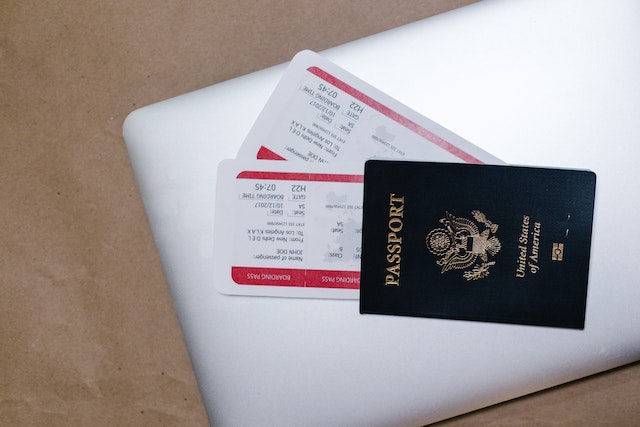Data Hub: Workplace and working from home confessions of Brits in 2023
Workplace culture has changed indefinitely since the pandemic. When office workers were suddenly unable to leave their homes, companies were forced to adapt, with the majority adopting a “work from home” (or WFH) policy.
Working from home was by no means a new concept created during the pandemic, but it was certainly much less common within the workforce than it has become since the lockdown. One study predicts that 11% of people in the UK are currently “hybrid” working. Another report found that, at the time of the study, 28% of working adults had worked both in the office and at home in the week prior.
Now that it is the norm, how does working from home look for British workers in 2023?
Since the pandemic, reports have indicated that employees have shifted their attitudes and priorities when it comes to work. As such, here at TonerGiant, we wanted to investigate the realities and behind-the-scenes of British workplaces in 2023, when it comes to both working from home and working in the office.
The following article contains a collection of statistics about office working and “WFH” confessions from Brits in 2023, utilising both trusted external sources and data collected, in 2023, here at TonerGiant.

Do British workers watch TV when working from home?
82% of UK hybrid workers admit to watching TV when working from home, according to our recent survey data.
Of those who do, the average worker spends two hours and one minute watching TV during their WFH day. Given that the average daily working hours in the UK is 7.28 hours, we can assume that most hybrid workers spend 28% of their working-from-home days watching television.
Men are 5% more likely to watch TV when working from home compared to women and watch 19 minutes more per day, on average.
We asked those who watch TV when WFH, which shows they regularly watch. The ten most popular TV choices for British hybrid workers, in order of popularity, are:

- 1. Streaming services (Netflix, Disney+, Amazon Prime and Youtube) 49%
- 2. BBC Breakfast 28%
- 3. This Morning 24%
- 4. Good Morning Britain 22%
- 5. Come Dine With Me 15%
- 6. Tipping Point 14%
- 7. Homes Under the Hammer 13%
- 8. Loose Women 13%
- 9. Countdown 11%
- 10. Lorraine 10%
Excluding streaming services, men are most likely to watch BBC Breakfast, whereas women are more likely to tune into This Morning.
Based on our calculations and the above results from our survey, we can assume that hybrid workers make up more than a third (34%) of BBC Breakfast’s audience. With an estimated 1.1 million daily viewers, 9% of UK workers working hybrid, and if we take a day where 50% of workers are working from home, that would amount to 376,146 hybrid employees tuning into BBC Breakfast.
Using the same methodology, we predict that hybrid workers could make up a whopping 48% of Good Morning Britain’s daily viewership, which has an estimated 610,000 viewers on average
How many workers use the office printer for personal needs?
In a typical month, the average employee prints 5.46 sheets of paper for personal use in the office, according to our latest survey data.
The most common things which employees are printing out at work (in order of popularity) are:
1. Travel documents (such as train tickets and boarding passes)
2. Event tickets
3. Shopping labels (such as return labels, QR return codes and labels for Vinted or Depop)
4. A CV or cover letter to apply for other jobs
5. Anything for a friend or family member
6. School work/documents for children
7. Personal photos
8. Paper decorations (such as origami, colouring outlines and posters)

How much does personal printing cost UK businesses each year?
We predict that each year personal printing costs UK businesses as a whole:
£121,323,121.90
This calculation is based on our survey data, estimations that the average spend per year on employees’ printing needs is £700, and a predicted 27,054,000 employees of private UK businesses.
Our calculations estimate that:
- It costs a business 8p per sheet of paper printed at work
- 23,807,520 employees across the UK have printed personal documents at work in the past year
- The average worker prints 65.52 personal documents at work per year
- That’s an estimated 1,559,868,710 sheets of paper printed each year across the UK, at work, for personal use
Therefore, personal printing has cost all private businesses in the UK over a hundred MILLION pounds in the past year.
Office confessions
Our survey of 2,000 British hybrid workers found that Brits are guilty of a multitude of sins in the workplace. The data uncovered that when in the office, in the past year:
- A quarter of Brits have used their work phone for personal use
- 22% of Brits have worked on an application for a new role
- 14% have come into work extremely hungover
- 13% of Brits have done work for a second job whilst on the clock
- 10% have slept whilst on the clock
- 9% have vaped on the premises (when vaping is not permitted)
- 8% have drank alcohol during the working day
- 8% have overexaggerated work expenses
- 7% have knowingly stolen someone else’s food from the fridge
- 6% have stolen cutlery from the workplace

Despite these confessions, it appears that 2 in 5 hybrid workers are on their best behaviour in the office, with 41% reporting that they’ve not done any of the above in the past year!
Men appear to break workplace rules more than women. 71% of male participants admitted to being guilty of one or more of the above confessions, compared to 51% of females.
Which bad habits are more common when working from home vs in the office?

However, Brits are clearly more lax at home when it comes to professionalism (as expected). We found that Brits are 10% more likely to break workplace rules or act unprofessionally at home rather than in the office.
But which bad workplace habits are you more likely to do when WFH vs in the office? We found that Brits are more likely to:
- Use their work phone for personal use when in the office
- Work on an application for a new role when in the office
- Sleep on the clock when at home
- Drink alcohol during the working day when at home
- Overexaggerate work expenses when in the office
We also discovered that doing work for another job and starting work extremely hungover is equally as likely in the office and at home.
Despite naturally having different behaviours when at home and in the office, it appears performance is not impacted. One study found that the majority of companies deem that their homeworking staff and office staff have comparable performance and, in fact, for most criteria homeworking staff are likely to perform better.
There are clear benefits of the hybrid/”WFH” model for staff too, with one study finding that one of the main advantages is happier employees.
Working from home confessions
Almost a third (27%) of hybrid workers admit to socialising with friends and family at home whilst on the clock for their job.
This is a more common occurrence for Gen-Z workers, with 39% of 18 to 24-year-olds admitting to hanging out with friends and family during working hours in the past year.
Of the 2,000 hybrid workers surveyed, in the past year during working hours:
%
Workers doing gardening or DIY
%
Workers have played on a games console
%
Workers have had sex on the clock
Male workers are, on average, 10% more likely to do all three of these unprofessional traits than their female colleagues.
Millennials in the 25 to 34 age bracket are also the most likely to have sex on the clock.
Summary
Based on our findings, and the findings of additional trusted sources, it is clear that there are different behaviours when working in the office vs at home. However, the advantages of adopting a hybrid working model are apparent, for both employers and employees.
